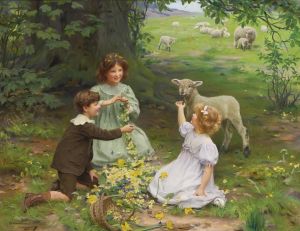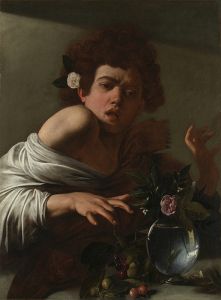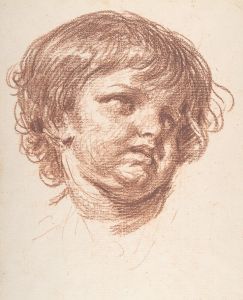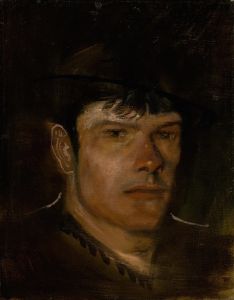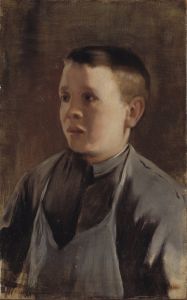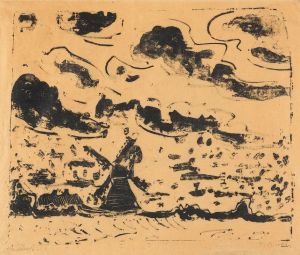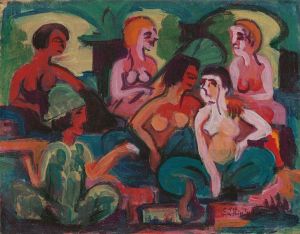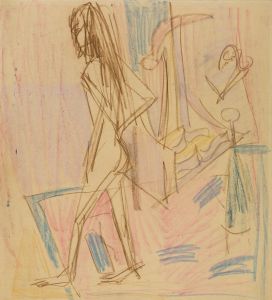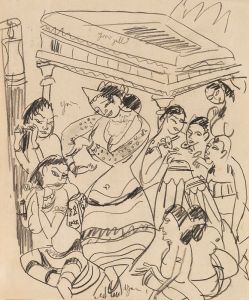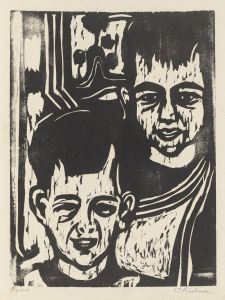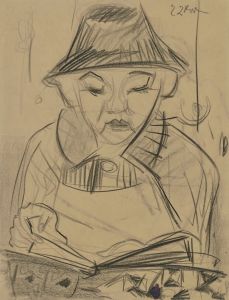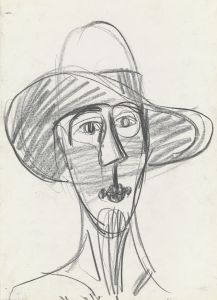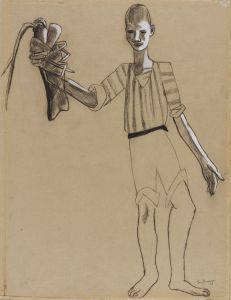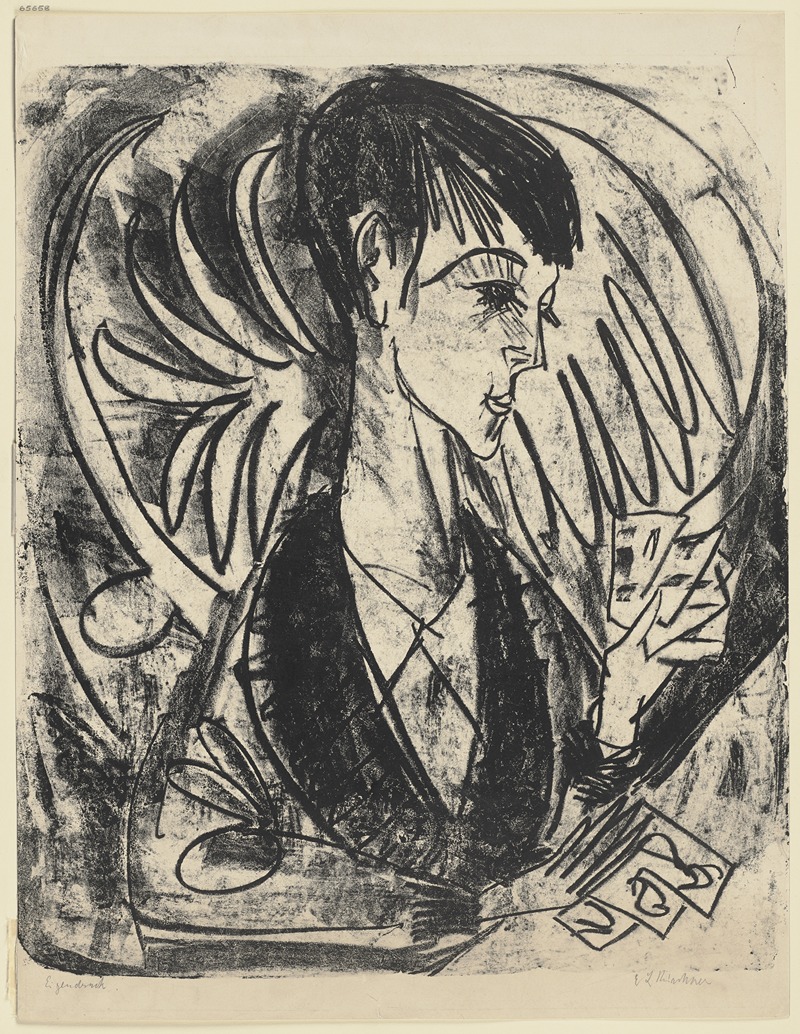
Junge mit Kartenspiel, Sohn Hardt
A hand-painted replica of Ernst Ludwig Kirchner’s masterpiece Junge mit Kartenspiel, Sohn Hardt, meticulously crafted by professional artists to capture the true essence of the original. Each piece is created with museum-quality canvas and rare mineral pigments, carefully painted by experienced artists with delicate brushstrokes and rich, layered colors to perfectly recreate the texture of the original artwork. Unlike machine-printed reproductions, this hand-painted version brings the painting to life, infused with the artist’s emotions and skill in every stroke. Whether for personal collection or home decoration, it instantly elevates the artistic atmosphere of any space.
"Junge mit Kartenspiel, Sohn Hardt" (Boy with Card Game, Son Hardt) is a painting by the German expressionist artist Ernst Ludwig Kirchner. Kirchner, born on May 6, 1880, in Aschaffenburg, Germany, was a key figure in the early 20th-century expressionist movement and a founding member of the artist group Die Brücke (The Bridge). This group aimed to create a new style that would form a bridge between traditional academic art and modern expressionist art.
The painting "Junge mit Kartenspiel, Sohn Hardt" was created in 1916, during a period when Kirchner was deeply influenced by the psychological and emotional turmoil of World War I. This period marked a significant shift in his work, characterized by more intense colors, distorted forms, and a focus on the inner emotional states of his subjects.
The subject of the painting is a young boy, identified as the son of a person named Hardt. The boy is depicted engaged in a card game, a common leisure activity that Kirchner used to explore themes of innocence, play, and the passage of time. The painting is notable for its vibrant use of color and dynamic brushstrokes, which are hallmarks of Kirchner's style. The boy's figure is rendered with a sense of immediacy and spontaneity, capturing a moment of concentration and engagement with the game.
Kirchner's use of color in this painting is particularly striking. He employs a bold palette, with contrasting hues that create a sense of energy and movement. The background is composed of abstract shapes and patterns, which serve to highlight the central figure and add to the overall dynamism of the composition. This approach reflects Kirchner's interest in the emotional and psychological impact of color and form, a key aspect of expressionist art.
The painting also reflects Kirchner's interest in the human figure and his ability to convey complex emotions through his subjects. The boy's expression and posture suggest a mix of concentration and contemplation, inviting viewers to consider the deeper emotional and psychological dimensions of the scene. This focus on the inner life of his subjects is a defining characteristic of Kirchner's work and a central theme in expressionist art more broadly.
"Junge mit Kartenspiel, Sohn Hardt" is part of Kirchner's broader body of work, which includes paintings, prints, and sculptures. His work has been widely exhibited and is held in major collections around the world, including the Museum of Modern Art in New York, the National Gallery of Art in Washington, D.C., and the Kirchner Museum in Davos, Switzerland.
Kirchner's contributions to the expressionist movement and his innovative approach to color, form, and subject matter have had a lasting impact on modern art. His work continues to be studied and celebrated for its emotional depth, technical skill, and bold experimentation.
In summary, "Junge mit Kartenspiel, Sohn Hardt" is a significant work by Ernst Ludwig Kirchner that exemplifies his expressionist style and his ability to capture the emotional and psychological nuances of his subjects. The painting remains an important piece in the study of early 20th-century art and Kirchner's influential career.






